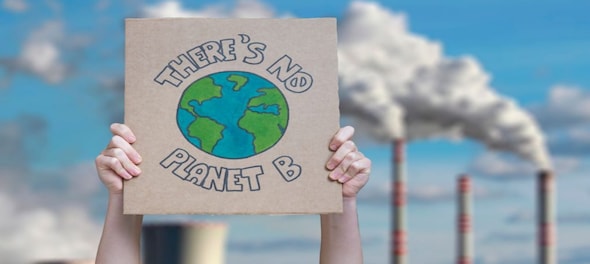
“Poor nations were locked in a Sisyphean trap: They must borrow money to ward off rising seas and storms — only to see disasters made worse by climate change destroy the improvements they make. But the debt remains, and often countries are left to borrow once again”, Mohamad Nasheed, the former president of the Maldives, said while talking about the debt crisis faced by the vulnerable countries. As the country faces severe risk of rising sea level, its external debt touched an all time high in 2022.
Maldives is not alone. Last year, when Pakistan was getting ravaged by the flood, the International Monetary Fund (IMF) approved a bailout of over $1.1 billion. This aid came in when the World Bank’s official number of property damage in the South Asian nation itself was $40 billion. To mitigate the existing problem, Pakistan sought more funds, when the country already had external debt of around $130 billion.
The 49th G7 summit from May 19 to 21, 2023 is another chance to fix the G7's paradoxical stance on climate finance and strengthen the less-developed nations in the global battle against climate change. It's one of the top issues that the Indian Prime Minister is expected to bring up when the heads of state of the world's seven richest democratic countries meet in Hiroshima this week.
The developing countries argument in the climate finance debate
Several leaders from the global south argue that after the pandemic this sum is insufficient as countries are economically battered and mired in debt. According to the World Bank, around 58 per cent of the world’s poorest countries are facing debt distress or at high risk of it. It also stated that middle-income countries face similar risk.
“Lower income countries spend five times more on debt payments than dealing with climate change”, mentioned a research by Jubilee Debt Campaign, an organisation that aims to end unjust debt and its root causes. Pakistan could be a recent example of how countries sitting on a huge debt are accumulating more due to a climate crisis.
As along with invitees like India, Australia, Brazil, South Korea, among others, gather in Japan’s Hiroshima, this will be one of the biggest talking points.
“G7 countries owe low- and middle-income countries $13.3 trillion in unpaid aid and funding for climate action”, revealed a new report by Oxfam just before the summit. Despite the already pending debt, it further added, these wealthy countries and their rich bankers are demanding that global south countries should pay $232 million a day in debt repayments to them by 2028.
‘Would rich countries fulfill the promise of providing $100 billion per year to the poorer states?’, was the question that remained unheard or perhaps deliberately shunned and therefore unanswered for several years. At the 27th Conference of Parties (COP 27) in Egypt last year, finally this fund, which was vowed in 2009, was approved, but by then, the situation had worsened.
“Developing countries have to balance between urgent climate needs and paying back debts,” Jessica Omukuti, research fellow at the University of Oxford’s Inclusive Net Zero initiative told Financial Times. Therefore, V20, a bloc of 20 countries among the most vulnerable to climate change, is considering halting debt payments of around $500 billion.
The possible solutions to ensure there's enough money on the table to tackle climate change
India's position on the debate is simple: developed countries should offer a lot more than $100 billion, the loans given to poor and developing countries should be at a concessional interest rate, with longer repayment schedules, and there should be a clear distinction made between efforts that are meant to mitigate the impact of climate change and those that are meant to enable adaptation and sustainable development.
One solution could be a mechanism under which “countries who borrowed money from other nations or multilateral development banks (e.g., the IMF and World Bank) could have that debt forgiven, if the money that was to be spent on repayment was instead diverted to climate adaptation and resilience projects”, according to Brookings. Similar such swaps have worked in countries like Seychelles, Poland and Argentina.
There could be other equitable solutions too but the time is running out. It’s high time for G7 countries to eliminate the climate finance paradox and protect other countries from marching on the ‘highway of climate hell’. After all, in Paul Hawken’s words, we are stealing the future, selling it in the present and calling it a gross domestic product.
Check out our in-depth Market Coverage, Business News & get real-time Stock Market Updates on CNBC-TV18. Also, Watch our channels CNBC-TV18, CNBC Awaaz and CNBC Bajar Live on-the-go!


Exclusive: Can't fix elections in India, not even for a municipality, says PM Modi on Opposition charges
Apr 29, 2024 9:25 PM
Supreme Court dismisses plea seeking postponement of CA exams; details here
Apr 29, 2024 2:29 PM
Just 8% women candidates contested first two phases of Lok Sabha polls
Apr 29, 2024 12:00 PM
The sexual assault case against Prajwal Revanna — here's what we know so far
Apr 29, 2024 11:36 AM

